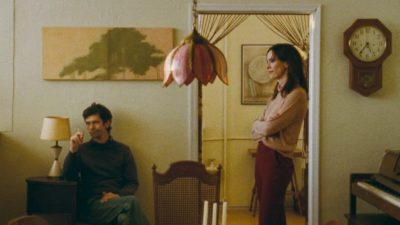In 1918, internationally renowned Hungarian director Sándor Korda released the silent film version (Man of Gold) of the novel The Man with the Golden Touch by Mór Jókai. The film is very far from being forgotten – its film strips have been remastered, and now a brand new music has been written to it. For the 2020 Composing Competition of the Müpa, Bence Farkas started to work on accompanying music to this film, believed to be lost for long and then found in the Coblenz Collection of the Bundesarchiv-Filmarchiv in 1983. It won the first prize and a commission to finish the piece. The world premiere will be on 15 May 2020 at 8 pm, as part of the Bartók Spring International Art Weeks. Gergely Dubóczky, already experienced with all-art events, will conduct the Győr Philharmonic Orchestra. We talked to him about this performance.
You can join the virtual concert hall of the Bartók Spring for free.

Is there any special challenge for a conductor in conducting a piece that was written for a silent film?
One of the most crucial and interesting challenges is that we have to arrive on time, we have to tailor the music to the film frames – but with a maintenance of the immanent freedom of music. It depends on the type of film music and situation whether it depicts a character, or we need to adjust the pace of a glissando to a teardrop running on a face. It is also important to find the dramaturgic links between film and music, and put them together.
Do you think Bence Farkas’ piece has a specific genre? If yes, what do you think it is?
I wouldn’t say a genre, but what is very characteristic is that aside from his own ideas, the audience can recognise a lot of other composers and styles. This is the source of wonderful associations, as references to Malher or Nino Rota (who composed music to Fellini’s films) is absolutely no accident. The evoked world brings the music, and therefore also the motion picture, more and more layers of meaning.
What was your first impression about this work?
I was a jury member at the Composing Competition, and what I immediately liked in the submitted section was how many ideas it has and how rich it is in tones. I was curious about how it continues.
Have you cooperated with the composer during the rehearsals?
Of course, we needed to discuss a lot of little or bigger details.
In the earliest days of filmmaking, music accompaniment for silent films was mostly there to suppress the noise of the cine-projector. What function can it have in the 21st century?
It is a great possibility for different eras to meet. The motion picture is ancient yet the accompanying music is contemporary. Also, the language of film has changed a lot, an old silent film is a historical document of its time, even if it can also be revisited today. It is very interesting how the experiences of the meantime, the whole 20th and early 21st centuries, can support the composer in this creation. Music and film should strengthen each other.
Details from the silent film:
Also, improvisational music played spontaneously during silent films was often criticised for influencing the interpretation and even leading emotions or thoughts too far from the original filmmaker’s intentions. Do you think the same danger is there with composed music being played live?
In fact, one of the most exciting parts is to see how many different meanings exist if you use different music for the same film scene. For this reason, the composer has a huge responsibility: you cannot discuss things with the director anymore. But that only makes everything more intriguing.
What is the reason behind writing contemporary music to accompany ancient films?
The genre itself is very tempting, I absolutely understand why a composer likes such an encounter. Every film is a little world – I would also let my imagination do its job!
Interview: Anna Rácz
Translation: Zsófia Hacsek




























Comments